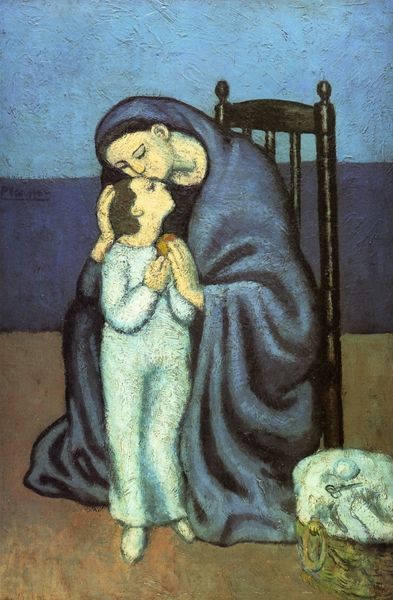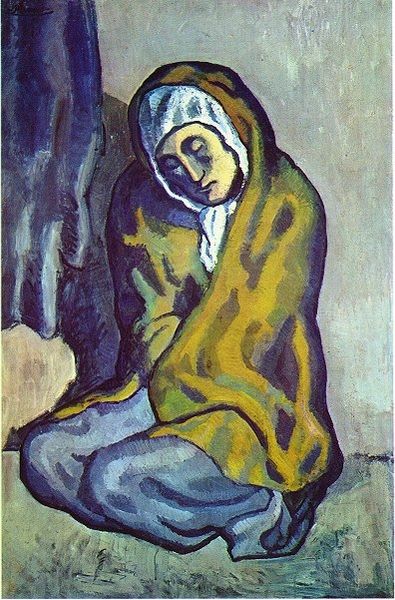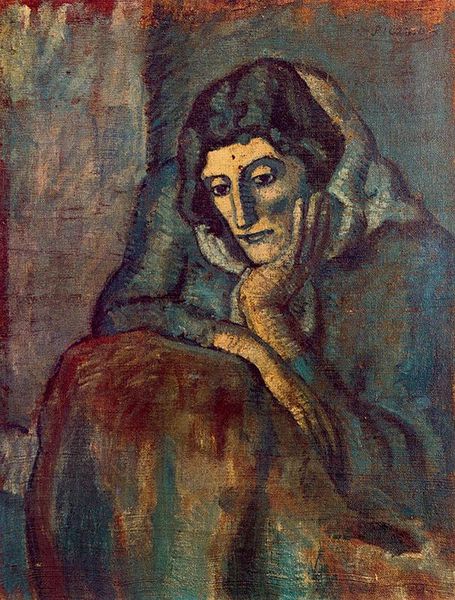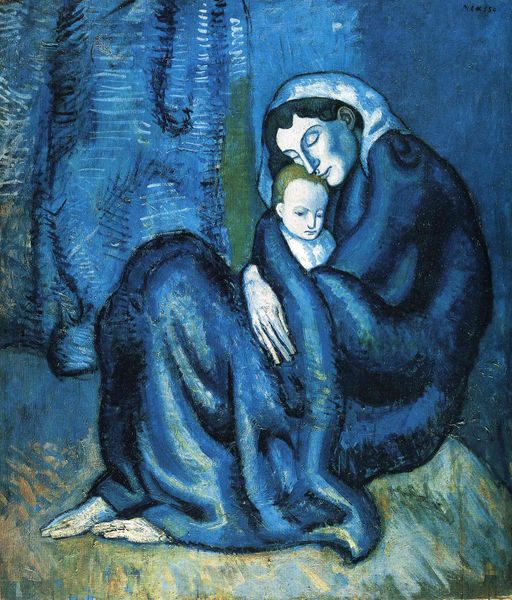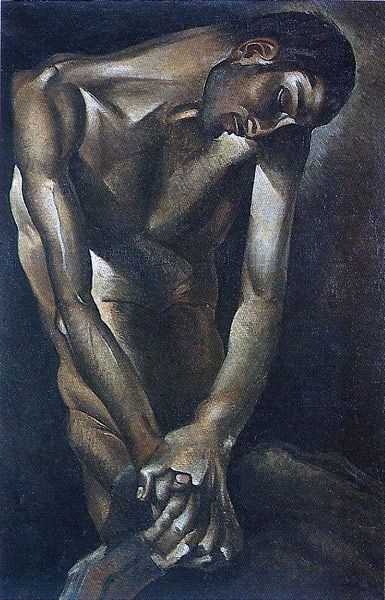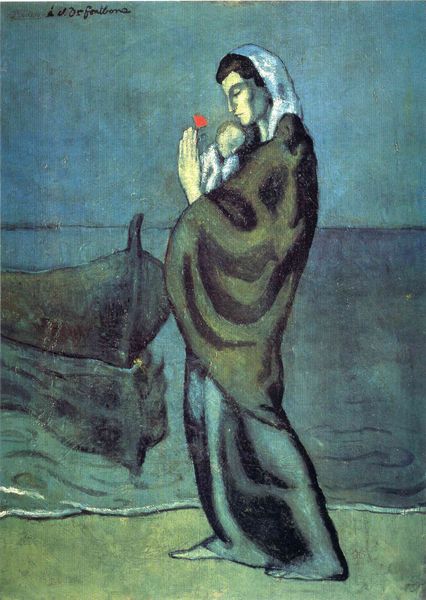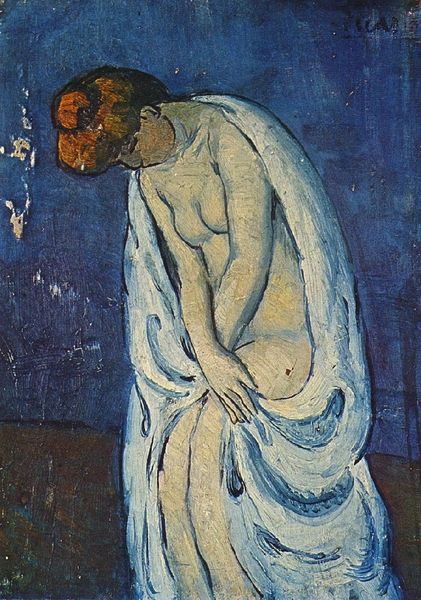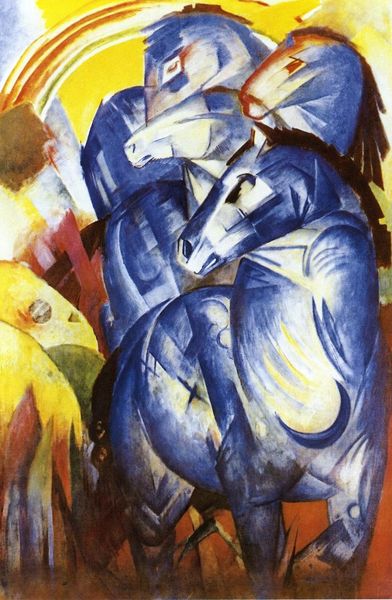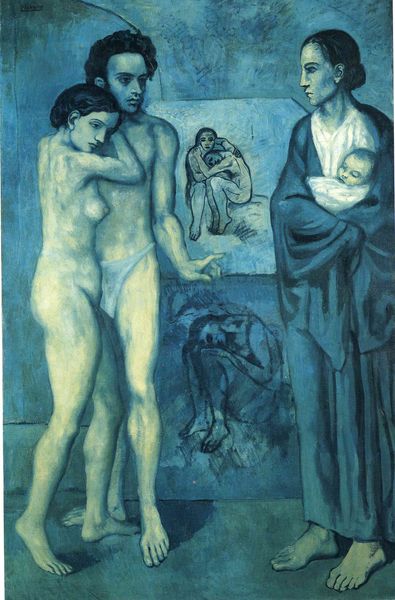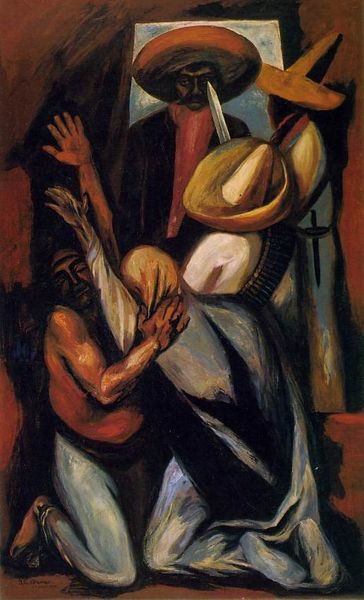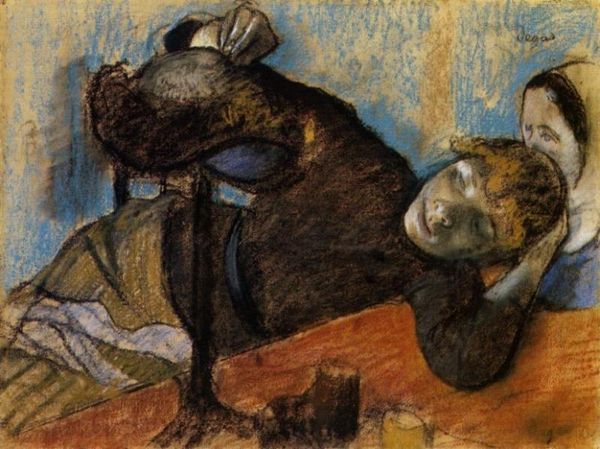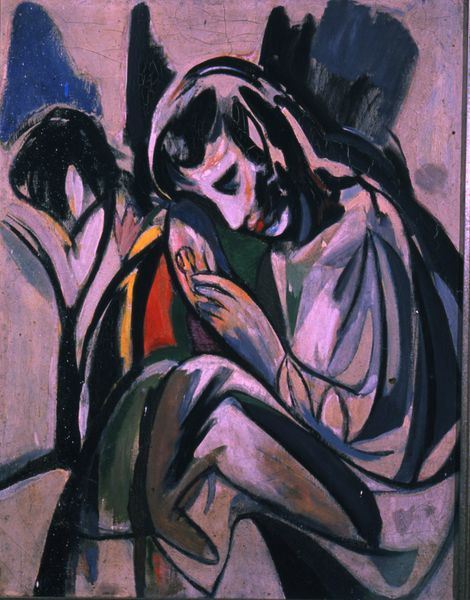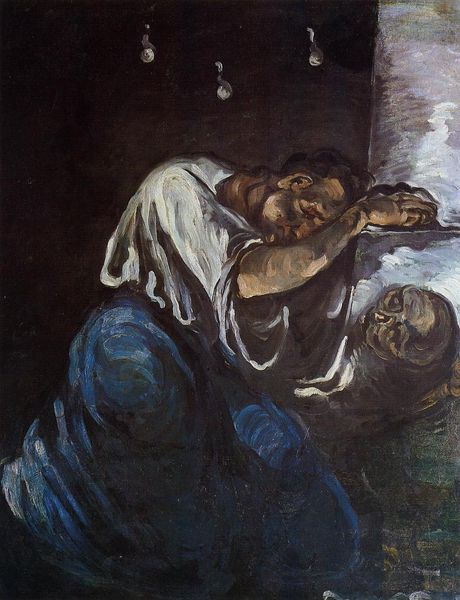
painting, oil-paint
#
painting
#
oil-paint
#
oil painting
#
expressionism
#
portrait drawing
#
portrait art
Copyright: Public domain US
Pablo Picasso painted ‘The Visit’ in 1902, a canvas dominated by cool blues that epitomize his Blue Period. The figures of two women, cloaked and barefoot, embody the themes of poverty and marginality that preoccupied Picasso at this time. Painted in Spain, we can understand this work as a social commentary reflecting the economic hardships and class divisions of early 20th-century Spain. Picasso's choice of a monochromatic palette heightens the emotional impact, evoking a sense of melancholy and despair. The women’s downcast eyes and the overall composition suggest a world of limited opportunity and social exclusion. Picasso himself came from a relatively privileged background but he paints a world very different from his own, perhaps critiquing his own position. Art historians have examined the influence of institutions like the Catholic Church on Picasso's imagery and the socio-economic conditions of Barcelona at the time. By researching these themes, we can gain a deeper understanding of how artists like Picasso responded to the social realities around them.
Comments
No comments
Be the first to comment and join the conversation on the ultimate creative platform.

